Back-to-School Wellness Guide

To avoid back pain, choose a backpack that isn’t bigger than your child’s torso and has wide, padded straps.
From unhealthy school lunches to heavy backpacks, kids and parents face a variety of challenges to maintaining health and wellness during the school year. As summer draws to a close and classes begin, this back-to-school wellness guide can help you and your children navigate these challenges.
Lighten the Load
On the first day of school each year, kids comes home with new classmates, new teachers — and a heavier backpack. A heavy load can cause chronic back pain in children, so to avoid side-effects from weighty textbooks, encourage your children to leave their books in lockers or at home whenever possible to prevent back strain.
Talk to your child about using both straps to carry the backpack, since putting all the weight on one side can contribute to pain in the back, neck or shoulder. Remind your child to maintain proper posture while wearing their backpack: Slouching or dropping the head will increase pressure on the cervical spine.
It also is important to choose the right backpack. Pick one that is no larger than the child’s torso. It should have a padded back, and straps that are wide, padded, and adjustable. Multiple compartments can help balance the load.
Basic Precautions Can Help Prevent Illnesses
When they return to school, kids are exposed to a wide range of health hazards, such as colds, the flu, and lice. Make sure your child follows some basic principles to reduce the chance of getting sick at school:
- Avoid touching eyes, nose, and mouth (this is the primary way diseases are spread)
- Drink plenty of water
- Cover the mouth and nose while coughing and sneezing
- Wash hands with soap and water frequently throughout the day, and tuck hand sanitizer in the backpack
- Be careful not to share brushes, combs or hats, which can spread lice, an unpleasant reality in schools
While it may be tempting to send a sick child to school, it is better to wait until they have been symptom-free for 24 hours before letting them return. Teachers and other parents will appreciate your precautions to limit the spread of the sickness.
The classroom is the first place your child may notice vision problems. Be aware of any increase in difficulty completing assignments — it may be vision-related.
Prepare Lunches And Snacks Ahead
School lunches, which often are high in salt, fat, and sugar, are considered a contributing factor to increasing childhood obesity rates. While buying lunch at school is always available for busy weeks and kids in need, with a bit of preparation and planning, you can provide your children with nourishing lunches to bring to school every day of the week.
Packing healthful lunches doesn’t have to be an insurmountable task. Preparing fruits, veggies, healthy snacks, and meals ahead of time saves time and effort later, making your morning routine a breeze. Create a master list of tried-and-true favorites and the groceries needed to prepare them. Set aside an afternoon or evening once or twice a week to plan and prepare meals for the week. Try creating a meal plan and breaking down the tasks needed to fix each meal.
The same principles can be applied to keeping a stock of after-school snacks. Children often come home from school ravenous, with dinner several hours away. For busy kids, junk food provides inadequate fuel for studying or physical activity.
Resist the urge to buy junk food and prepare quick, easy snacks instead. Some easy foods to grab and go include fresh fruits and vegetables, high-fiber granola bars that are low in sugar, and protein-rich foods like hard-boiled eggs, peanut butter, and hummus.
For more ideas about healthy options that can help keep up energy and reduce stress, check out this recent blog post.
Start on the Right Foot
Properly fitting shoes can affect your child’s posture: Foot problems which typically first appear in childhood, can contribute to back pain. Check for calluses, excessively flat feet, and other concerns to ensure proper support and fit. Small children can’t always communicate if shoes fit improperly, so look for shoes with room for growth, plenty of flexibility, and breathable fabrics.
Find a Balance Between School And Physical Activity
Homework and studying are an unavoidable part of going back to school, but helping your children achieve a balance between work and physical activity gives them the freedom to be happier and healthier.
The World Health Organization recommends kids spend at least 60 minutes a day doing physical activities. In addition to the physical benefits of exercise, research suggests that regular exercise can ward off anxiety and depression in children, increase self-esteem, and improve academic performance and quality of sleep.
Your children exercise their brains all day in school and while doing homework, so exercising their bodies provides a needed balance. Make a plan to keep track of goals for completing homework and spending time on the move.
Organized sports can provide lessons in teamwork, social skills and build character traits like perseverance. But for younger children, unstructured playtime is a fast-disappearing, yet important aspect of learning and development.
Whatever form of exercise your children choose, aim for at least an hour a day of physical activity.
Refocus Your Family Routine
Returning to school is all about new beginnings and it’s a great opportunity to reintroduce structure to your family life. Summer is often a time of relaxation and recuperation from the stress of a long school year, but if the first day of school catches you unprepared you’ll be struggling to keep up with everyone’s different schedules.
Try making a master schedule and calendar, particularly if you’re juggling students in different levels of school, with different events. You’ll know at a glance if you can supervise a school field trip or make it to the soccer game.
Avoid morning chaos by handling chores like laundry and meal planning the night before. Handle homework reminders at least an hour before bedtime to avoid excuses. For children anxious about going back to school or attending for the first time, try a practice run going to school in the morning. Another trick is to adopt a school mealtime schedule. Easing unsure children into a new school routine can calm fears and make school an enjoyable experience.
We hope this guide will help you and your family stay healthy and happy as the new school year fast approaches. If you have any questions or would like more information about back-to-school health and wellness, please don’t hesitate to contact us.
Image Copyright: rimdream / 123RF Stock Photo
About the Writer
tech
Chiropractic May Help Elderly Patients Avoid Falls
 An overview of current research, published in the Journal of the Canadian Chiropractic Association, shows that chiropractic care may have a role in helping prevent falls in elderly patients who suffer from mechanical neck pain or dizziness.
An overview of current research, published in the Journal of the Canadian Chiropractic Association, shows that chiropractic care may have a role in helping prevent falls in elderly patients who suffer from mechanical neck pain or dizziness.
Elderly patients often experience nonspecific dizziness and chronic neck pain at the same time. Both of these symptoms are risk factors for falls, the leading cause of fatal and nonfatal injuries in adults 65 and older. Falls can result in increased morbidity and complications. In the United States, one in three elders experiences a fall each year.
Dizziness tends to increase with age. The central nervous system receives signals from the body to provide a sense of balance, and several of those signals are from muscles associated with the cervical spine. While the cause of nonspecific dizziness is not known, many researchers suggest it is caused by age-related deterioration of sensory inputs that assist with balance.
When neck muscles experience pain or dysfunction, a connection is disrupted and the brain receives mixed signals from different parts of the body, which can cause dizziness, according to current research. Dysfunction in the muscles of the cervical spine is more likely to be associated with disrupted balance, vertigo, and nonspecific dizziness, more so than dysfunction of the muscles of the lumbar spine.
Whether neck pain is the result of physical trauma or muscular dysfunction, it is associated with dizziness at high rates, along with back pain.
How Chiropractic Can Help
Spinal manipulation is a common technique used by chiropractors to treat neck pain. A study published in 2014 in Spine found that spinal manipulation combined with home exercise was an effective treatment for neck pain in elderly patients.
For elderly patients with dizziness with no known cause, traditional medical treatments are limited. While more research is needed, several studies on the efficacy of spinal manipulation in the treatment of neck pain show consistent improvement in balance and symptoms of dizziness as well.
Chiropractic is a safe, conservative treatment for dizziness and neck pain in elderly patients. To alleviate symptoms, doctors of chiropractic can provide a treatment plan that combines several therapies, such as home exercise, therapeutic massage, physiotherapy modalities, and spinal manipulation. Even though conservative measures often yield great results, Chiropractors often will collaborate with other health care providers to help facilitate a resolution of symptoms for patients as well.
The literature review suggests that more rigorous, large-scale studies should be conducted on the effectiveness of spinal manipulation as a treatment for dizziness. This is especially necessary because of the cost, rate of disability, and morbidity associated with falls in adults 65 and older.
About the Writer
tech
Guide to Sleeping Positions
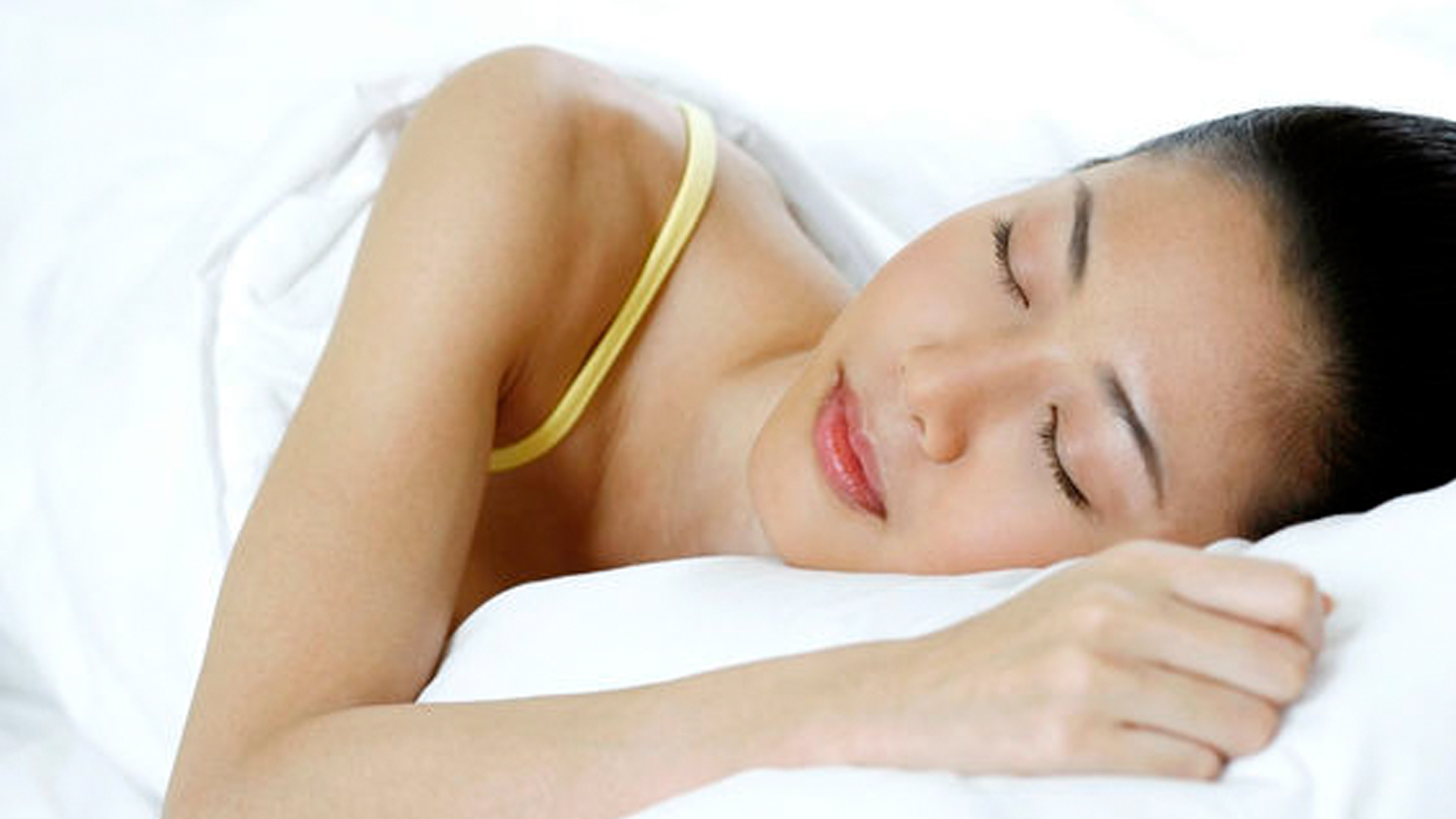
People spend roughly one-third of their lives sleeping. A good night’s sleep is a substantial factor in the quality of your overall health, and inadequate sleep can wreak havoc on you mentally and physically. The position you sleep in can have a huge impact on the quality of your sleep.
So, what’s the best position for sleeping? The answer varies depending on individual health concerns such as back pain, neck pain, and acid reflux, to name a few. It also depends on which position is the most comfortable for you. Above all, you should avoid sleeping in any position that causes stiffness or pain.
Pros and Cons of Common Sleeping Positions
1) Sleeping on Your Back
Sleeping on your back is one of the most highly recommended sleeping positions.
Pros:
- Acid reflux sufferers can avoid nighttime heartburn in this position
- Keeps the spine in a neutral, comfortable position
- Some back pain patients find relief sleeping on their backs
Cons:
- Those who snore may snore louder in this position
Tip: Sleeping on your back may be more comfortable with a pillow under your knees.
2) Sleeping on Your Side
If sleeping on your back is uncomfortable or painful, sleeping on your side is also a highly recommended position.
Pros:
- Reduces snoring
- Eases neck pain and back pain
- Reduces acid reflux if you sleep on your left side
- During pregnancy, sleeping on your side can improve blood flow and provide more comfort than sleeping on the back or stomach
Cons:
- Side sleeping may increase the chance of developing wrinkles and sagging skin on the side you favor
Tip: Try a pillow between your knees, under your waist or under your neck in this position.
3) Sleeping in Fetal Position
About 40 percent of people sleep in some variety of the fetal position, on their sides with legs curled up toward the chest. While fetal position may feel comfortable for some sleepers, it is not a recommended sleeping posture.
Pros:
- Often a comforting position
Cons:
- Restricts expansion of the diaphragm, which leads to shallow breathing
- Can increase pain from arthritis
- Can causes tension, aches, and pains
Tip: If fetal position is your normal sleeping posture, try stretching your legs out a bit into side sleeping instead.
4) Sleeping on Your Stomach
Pros:
- For snorers, sleeping on your stomach provides relief by opening the airways
Cons:
- Causes pressure on the joints, muscles, and spine and can lead to neck and back pain
- Difficult to avoid putting pressure on the spine
- Spending hours with your head turned to the side is bad for the cervical spine and can cause nerve pain
Tip: If you must sleep on your stomach, aim for a very thin pillow or sleep without a pillow to avoid straining your neck.
Choosing the Right Mattress and Pillow
The position you sleep in can influence your quality of sleep, and so can your sleeping equipment.
Choose a mattress that is firm enough to support your body in your ideal sleeping position. A sagging, limp mattress can certainly lead to a lackluster night’s sleep. Since the life of a mattress is typically five to seven years, periodically replace your mattress if possible. Additionally, flipping your mattress every few months can help it stay firm longer.
Pillows also play an important role in your rest. Depending on your sleeping position, you may need a fluffier pillow or a thinner one. Regardless of which you choose, remember to consider how much support you will need for the head and neck in each sleeping posture.
For instance, when you sleep on your side, your head needs plenty of support from a thicker, firm pillow so your neck doesn’t end up at an awkward angle. When sleeping on your back, a fluffy pillow keeps your head and neck supported without strain. Ergonomic pillows tend to be firm and shaped specifically to relieve pain from lack of support while sleeping.
If you’re not getting adequate sleep on a consistent basis, or you’re not sure which sleeping position is ideal for you, a doctor of chiropractic can guide you to the best ergonomic sleeping position for your health concerns.
Image Copyright: imagehitasia / 123RF Stock Photo
About the Writer
tech
Study: Manual Therapy Changes Processing of Pain
 A study published in the Journal of Manipulative and Physiological Therapeutics in October 2014 used functional magnetic resonance imaging (fMRI) to evaluate how the brain reacts to spinal manipulation used by chiropractors. Brain scans revealed that spinal manipulation and other types of manual therapy have an immediate effect on functional connectivity between regions of the brain that are responsible for processing pain.
A study published in the Journal of Manipulative and Physiological Therapeutics in October 2014 used functional magnetic resonance imaging (fMRI) to evaluate how the brain reacts to spinal manipulation used by chiropractors. Brain scans revealed that spinal manipulation and other types of manual therapy have an immediate effect on functional connectivity between regions of the brain that are responsible for processing pain.
Previous research has established a connection between neurophysical changes in regional brain communication and manual therapy. Many patients seek chiropractic care for pain relief, and multiple studies testify that chiropractic treatment relieves pain in neck pain patients, lower back pain patients, and others.
This study, conducted by researchers at the University of Florida, suggests that increases in functional connectivity or brain communication after manual therapy underlie pain relief.
Functional Connectivity and Pain Processing
Functional connectivity (FC) is defined as communication between regions of the brain, and in the case of this study, refers to communication between the pain-processing regions of the brain.
There are several areas of the brain associated with processing and modulating pain, including the thalamus, primary and secondary somatosensory, cingulate, and insular cortices. These regions are referred to together as the pain processing network. Activity in the PPN is part of pain recognition, but it also includes the interaction between the PPN and other areas of the brain.
Study Methodology
The researchers recruited participants, 24 of whom (17 men and 7 women) completed exercises designed to induce lower back pain. They were separated into three groups, each of which was treated with one form of manual therapy — either spinal manipulation, therapeutic touch, or spinal mobilization.
Participants were measured for pain intensity, sensitivity, and underwent an fMRI 48 hours after the pain-inducing protocol. They were randomized to one of the three treatment groups and then received the same measurements after treatment. All manual and manipulative therapies were administered by a physical therapist or chiropractor, using a standardized set of techniques.
Before and after undergoing their assigned treatment, participants were measured for changes in functional connectivity (FC) between regions of the brain that process and respond to pain. Functional MRIs revealed changes in FC between several regions of the brain after treatment. Several of these changes in connectivity between brain regions were shared among patients from all three of the treatment groups.
Manual Therapy, Functional Connectivity, and Pain Relief
Manual therapy consists of a variety of physical rehabilitation techniques, including spinal manipulation, spinal mobilization, therapeutic touch, tissue massage, and other techniques. According to the American Chiropractic Association, manual therapies are the most common treatment administered by chiropractors.
Researchers examined activity in the pain processing network and also how it reacted with other areas of the brain after treatment. Results found clinically significant changes in functional connectivity between several areas of the brain that appeared to be directly related to manual therapy.
Changes were also recorded in pain intensity and pain sensitivity. All three groups reported similar changes in pain intensity, but no changes were found in pain sensitivity.
These results may indicate that after manual therapy, functional changes are an underlying mechanism of pain relief.
More Research Needed
This study is unique because it includes more precise measurement than previous studies, including fMRIs of patients in a resting state before treatment.
Due to a lack of a control group that received no treatment — as well as the relatively small sample size — more research is needed to confirm the association between manual therapy and increased functional connectivity. It also suggests a future study on the effects and changes of MT on patients with chronic pain, since these results are only applicable to patients with acute pain.
About the Writer
tech
Study: Chiropractic Increases Soccer Players' Kicking Speed

A pilot study published in January 2015 in the journal Chiropractic and Manual Therapies found that lumbar spine manipulation and sacroiliac joint manipulation resulted in increased kicking speed and range of motion.
The study was conducted on 40 South African soccer players without previous injuries. Researchers Kyle Colin Deutschmann, Andrew Douglas Jones, and Charmaine Maria Korporaal of the Durban University of Technology selected subjects with similar physicality (height, weight, etc.) and clinical signs of lumbar spine or sacroiliac joint dysfunction.
The players were separated into four groups and given lumbar spine manipulation, sacroiliac joint (SI joint) manipulation, both lumbar and sacroiliac joint manipulation, and a sham laser intervention. The players did a standardized warm-up before treatment.
Immediately after receiving manipulation or sham treatment, players were measured biomechanically for changes in range of motion and kicking speed, as well as their perception of change in kicking speed.
Subjects who had received lumbar spine manipulation and SI joint manipulation had the most significant increase in range of motion from the lumbar extension, right rotation, and SI joint angular motions. All subjects who received manipulation of any kind had an increased kicking speed and they tended to perceive that their kicking speed had increased. Lumbar spine manipulation caused a significant increase in range of motion in right and left rotation, while SI joint manipulation did not cause significant increases in range of motion.
Muscle and Joint Function’s Role in Performance
Kicking, a fundamental motion in soccer, requires an intricate cooperation of muscles, joints, and ligaments. Range of motion and flexion in joints of the lumbar spine and the sacroiliac joint are vital to the instep kicking motion. Players must deliver maximum power each time they kick, which means the joints and muscles must be fully functional at all times.
When spinal joints do not function as they should, it has negative effects on the function of surrounding muscles and tissues as well as the rest of the body, making it harder for players to kick. This pilot study highlights the importance of restoring biomechanical balance to the structures of the spine through chiropractic manipulation.
Chiropractic Manipulation’s Effects on Muscle Function Studied
This study is the latest in several studies to examine how chiropractic manipulation affects muscle control and function. Another study recently discovered that chiropractic manipulation increases muscle function, reduces muscle fatigue, and increases the brain’s ability to communicate with muscles. This growing area of chiropractic research sheds light on manipulation as a treatment to improve overall physical function, particularly for athletes.
Due to the small size of the South African pilot study, the results call for more investigation into the effects of manipulation on kicking performance.
About the Writer
tech
5 Ways Good Posture Benefits Your Health and Happiness
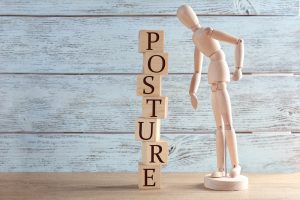 The American Chiropractic Association celebrates Correct Posture Month in May each year. Good posture is essential to maintaining the musculoskeletal balance of our bodies, which prevents harm to joints, ligaments, bones, and muscles. Proper posture can also help prevent muscle fatigue by allowing the muscles to use energy in the most efficient way possible.
The American Chiropractic Association celebrates Correct Posture Month in May each year. Good posture is essential to maintaining the musculoskeletal balance of our bodies, which prevents harm to joints, ligaments, bones, and muscles. Proper posture can also help prevent muscle fatigue by allowing the muscles to use energy in the most efficient way possible.
That’s not all! Research shows that posture can impact your overall health and happiness in several other important ways.
1) Good posture can improve your self-esteem.
A study conducted by a team of researchers in New Zealand and published in the journal Health Psychology found that when participants sat up straight, they reported feeling strong, enthusiastic, and excited, whereas a slouching posture corresponded with feelings of fear, hostility, and passivity. Researchers also reported that subjects in the upright position maintained a better rate of speech and stronger pulse.
2) Good posture can ease symptoms of depression and increase positive thoughts.
Professor Eric Peper, a researcher at San Francisco State University has studied the connection between posture and mood. In one of Peper’s experiments, participants reported that upright posture naturally led to more positive thoughts. His research, as well as previous studies conducted by other researchers, point to a mind-body relationship that runs both ways: bad posture can lead to increased feelings of depression, while good posture has the potential to increase positive thoughts and lift your mood.
3) Good posture can increase feelings of power, self-control, and confidence.
Researchers from Columbia and Harvard universities conducted a study on posture and found that closed body postures, such as slouching inward, led to higher levels of the stress hormone cortisol compared to expanded body postures. Participants with expanded body postures reported feeling more powerful and confident. An assessment of desire to take risks also found that open body postures made participants feel more inclined to take risks.
4) Good posture can reduce back and neck pain.
It’s clear that good posture has some powerful mental and emotional effects, but good posture can also help reduce back and neck pain. Bad posture can lead to strain on the joints and ligaments, as well as muscle soreness. Over time, chronic bad posture can cause premature wearing of the spinal structures, as well as secondary problems like headaches. Good posture helps to maintain balance and support for all areas of the body.
5) Good posture can improve oxygen intake by as much as 30 percent.
Besides causing damage to the structures of the body, bad posture can also reduce your ability to intake oxygen. Author and physician Jacob Teitelbaum recommends sitting up straight with an expanded chest, which can increase oxygen intake by as much as 30 percent. The increase in the amount of airflow provided by good posture provides more oxygen to the brain and muscles, giving your body an overall energy boost.
How Can You Improve Your Posture?
With all the evidence pointing to the benefits of good posture, you may be wondering about the best way to improve yours. This May, start making posture a priority with these guidelines for better sitting and standing habits — habits that may help you feel better physically and emotionally.
While standing:
- Be sure your ears, hips, and shoulders are all lined up, and align your feet with your hips and shoulders.
- Keep your knees from locking by bending them slightly and bear your weight on the balls of your feet instead of your heels.
- Engage your core muscles, and roll your shoulders back to avoid slouching.
While sitting:
- Your weight should be evenly distributed between your “sit bones.”
- Don’t cross your legs, and keep your knees level with or slightly higher than your hips.
- In an optimal sitting position, your feet should be flat on the floor.
- While sitting at a desk your shoulders should be relaxed and your arms should be at a right angle, with your forearms parallel to the floor.
With so much of our lives spent either sitting or standing, keeping these tips in mind can go a long way toward improving your posture.
If you have any questions or would like more information about the benefits of good posture or how to improve yours, please don’t hesitate to contact us.
Wishing you a happy and healthy Correct Posture Month, from the team at Tuck Chiropractic Clinic!
About the Writer
tech
Knee Osteoarthritis and Chiropractic

A growing body of research on the effects of Sitting Disease has linked excessive sitting to a number of diseases, including colon cancer, breast cancer, diabetes, and cardiovascular disease, as well as greater rates of disability later in life and even premature death
Sitting can also have negative effects on the structures of your body, including the upper and lower back, neck, and hip muscles and joints, as well as spinal discs. Even regular exercise doesn’t reduce the danger caused by hours of sitting every day, according to a study conducted by the University of Queensland in 2009. Daily hours spent sleeping, watching TV, using a computer at home and eating, compounded by hours spent sitting at work, could cause major health problems.
Sitting at a desk for hours on end is a common plight: 86 percent of Americans sit all day at work, according to a survey conducted by Research Now and Ergotron. Since regular exercise outside of work is not enough to counteract the negative effects of sitting, desk workers face an increased risk of health problems, but there are ways to maintain productivity and break up the amount of time spent sitting.
1) Get Moving on the Clock
With so much of our lives spent working, the challenge is figuring out how to avoid sitting so much while still getting work done. Here are six ways to get out of that desk chair and get moving on the clock.
2) Use a Standing Workstation. The American Medical Association now recommends that employers provide alternatives to sitting desks. A study published by the Centers for Disease Control and Prevention found that standing workstations reduced time spent sitting, upper back and neck pain, and improved mood state of employees.
Adjustable standing desks can cost upwards of $300, so if you’re looking for a cheaper alternative, try building your own DIY standing desk like this one made out of Ikea furniture. Just be sure to build your workstation at the proper height. This diagram is a helpful guide to determining how tall your standing desk should be.
3) Take Frequent Microbreaks. Sitting can cause muscle stiffness, so if you can’t use a standing desk, try taking microbreaks. A study published in the journal Applied Ergonomics found that workers who took microbreaks (averaging around 30 seconds every 20-40 minutes) experienced less muscle pain and discomfort with no negative impact on productivity. Professor of Health Services Toni Yancey of the University of California recommends using these breaks to stand up and march in place, dance, or walk a quick lap around your office.
4) Hold Walking Meetings. Research suggests managers spend as much as 25-80 percent of their time in meetings. While it may not always be possible to leave the office, holding walking meetings is a great way to get moving at work. Fresh air and a change of scenery can make your meetings more productive. Most importantly, regular walks can contribute to a healthier lifestyle, lowering your risk for cancer and type 2 diabetes.
5) Walk During Your Lunch Break. Taking a brisk walk or even a casual stroll during lunch is a quick and easy way to get out of your chair. A study published in the Scandinavian Journal of Medicine and Science in Sports tracked 56 office workers who took 30-minute walks during their lunch breaks. Not only did the participants improve physical fitness, but walks during the lunch hour also improved mood, increased relaxation, and decreased tension, regardless of how fast participants walked. For people who struggle to find time to exercise regularly, lunchtime exercise is a great way to increase physical fitness and counteract hours in a desk chair. If possible, take your walk outside, since experiencing natural environments can increase the benefits of your exercise, according to studies.
6) Stand While Making Calls. Standing up while making phone calls is an easy way to get out of your chair and break up your time spent sitting.
7) Technology Can Help. While technology often is the cause of even more time spent sitting, there are several devices on the market than can help you track fitness and decrease sitting, including the FitBit, Jawbone, and Apple Watch, among others. These devices can help you set fitness goals, remind you to get up and move during desired periods of time, measure your daily activity and calories burned, track sleeping patterns and diet, and much more.
Moving at Work May Increase Productivity, Too
Reducing the amount of time you spend sitting is good for your long-term health, but it could also increase your work ethic and job performance. A study conducted by professor Avner Ben-Ner of the University of Minnesota found that, over a yearlong period, employees of a company who used treadmill desks increased productivity at work.
The employees walking on treadmills experienced an increase in quality of work and quality of exchanges with colleagues. The study also found that the 40 out of 400 employees at the company who used treadmill desks increased overall physical fitness, exercising more outside of work as well as at their desks. While treadmill desks are not a realistic option for every workplace, this study demonstrates that movement throughout the day can be extremely beneficial to overall health and productivity.
Lowering your risk for Sitting Disease can have a big impact on your health. Use these tips to get moving at work and share them with your coworkers to create a more productive, healthy workplace.
About the Writer
tech
Blood Pressure, Hypertension & Chiropractors
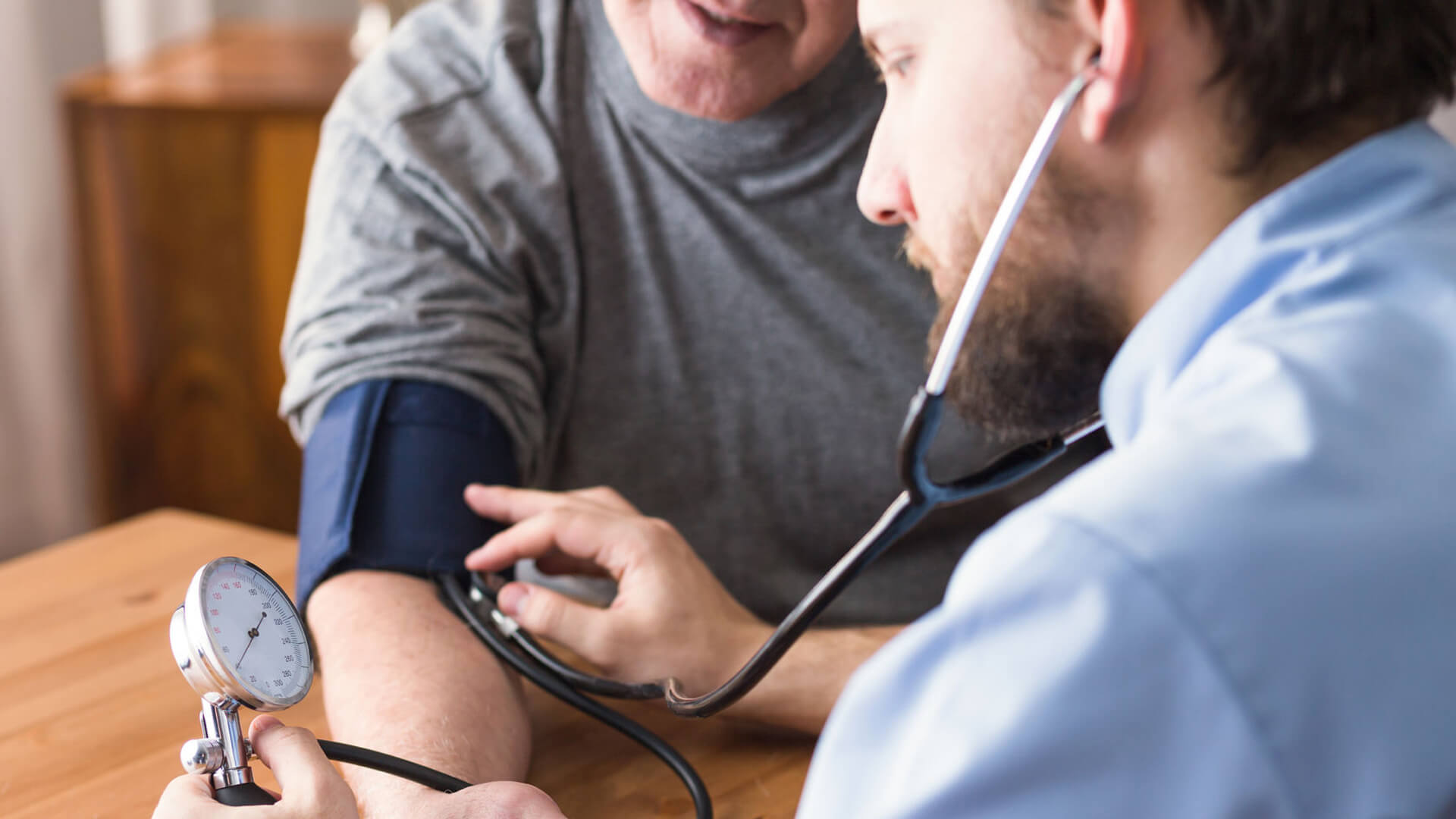 Chiropractic may have a positive impact on hypertension
Chiropractic may have a positive impact on hypertension
Really!! High Blood Pressure (Hypertension) affects 1 in 4 Americans.* You or someone you know probably has it. Now, am I suggesting that Chiropractic is a cure for high blood pressure/hypertension? No, no at all. Should you stop taking your medication and go to the Chiropractor for your hypertension problem? Definitely not. However, recent research out of the University of Chicago suggests that Chiropractic adjustments to a specific area of the neck can lower specific types of blood pressure an average of 14 mm/hg systolic (the top number) and 8 mm/hg diastolic (the lower number).**
“How is this possible?” you may ask. Medical Textbooks teach us that the brain and nervous system control every function of the body. The base of the brain/top of the spinal cord controls much of the pressure regulation mechanism of our circulatory system among other things. The first bone in the neck, called the “atlas” (or C1) can put pressure on the base of the brain and spinal cord and create dysfunction of the vascular system causing an artificial pressure increase. When the bone is moved (micro millimeters) by a Chiropractic adjustment, pressure is taken of the brain and spinal cord and normal function resumes according to the study.
This kind of research isn’t as far-fetched and surprising as it may seem if we think more about it. Chiropractors work with headaches, neck pain, upper back pain, low back pain, sciatica, hip pain, and numerous other conditions in the same basic manner as the Doctors in the blood pressure study. Chiropractors treat patients every day with the understanding that the nervous system does indeed control and coordinate every function of the body. That is how we have consistently achieved the great clinical outcomes over the last century. This research piece shows that very relationship at work.
In the same breath, that in no way means that every condition is a Chiropractic case. However, a healthy nervous system will always contribute to overall well-being no matter where you stand on the health continuum (aged, young, sick, well, etc.) Every day, more and more research is showing a consistent relationship between a healthy nervous system and a better functioning body.
So, when under chiropractic care, it is essential to follow recommendations through your care plan for maximum benefit. In addition, as you have read, it can also play an important role in affecting other systems of your body and help with overall health and well-being. Continuing with wellness care is your choice and can most definitely affect your quality of life in a positive manner for years to come!
*Harvard Health Services
**“Chiropractic Cuts High Blood Pressure”, Journal of Human Hypertension (2007) 21, 347-352.
About the Writer
tech
Runners Can See Improvement with Chiropractic Care

When most people think of the term “chiropractic”, they automatically associate it with “low back pain”. However, the range that chiropractic care covers is far greater than this. Think of the last time you went for a jog, or even a fast paced walk. Consider the strain that you put on your knees, your ankles, and your feet.
The most common complaint that you hear from runners is plantar fasciitis and, while there’s no instantaneous cure for it, chiropractic can do wonders for an ailment such as this. Plantar fasciitis is a manifestation of the tendon being pulled, whether it is caused by form when running or leg muscles pulling in excess. A misalignment of your spine can cause this type of tension anywhere in the body. If the misalignment continues, the strain and wear and tear that is put on your body will continue and worsen. It is important to halt the progression of interferences concerning the spine to avoid degeneration. In combination with therapeutic modalities such as ultrasound, an adjustment restores the normal joint mechanics of the body and reduces the tension that spreads across the bottom of the foot.
Another common complaint from runners is the knee area. Knee pain can stem from a multitude of things, but often times it is due to the patella moving in an irregular pattern, which in turn can put further stress on ligaments and tendons. With the use of therapy, inflammation around the joint can be decreased, diminishing the pain. When joined with an adjustment, movement is increased and functionality is enhanced. In addition, pain that you feel in your knee may be a representation of stress that is coming from other joints in the lower limbs. Chiropractic care identifies where that stress is originating and alleviates the stress from those joints to decrease pain and improve mobility.
Chiropractic care is a full body technique that removes interferences from your spine, allowing normal motion. With a properly functioning nervous system, you can continue daily activities without pain.
About the Writer
tech
Sharpen the Ax

Tuck Chiropractic Clinic specializes in comprehensive treatment for neck pain, low back pain, headaches, sciatica, and many other ailments. Chiropractic is effective for relieving pain and restoring proper function to the entire body.
Abraham Lincoln once said if he was given 4 hours to chop down a tree, he would spend three hours sharpening his ax. The same should hold true for us as we enter spring, the season of increased physical requirements.
We often find ourselves in a position of “needing to count down a tree” this time of year. We have spring cleaning lists, gardens to prepare for the planting of flowers and vegetables, and repairs that need to be made to lawn equipment. Instead of rushing forward to take a bunch of hacks at that tree, it may be better to step back, assess our upcoming requirements, and properly prepare ourselves for what may come. We often overlook the biggest tune-up needed: our chiropractic adjustment!
Prior to lifting a bunch of “stuff” that should have been discarded long ago or crawling around the yard pulling weeds or sitting for hours on a lawn tractor, we need to make sure that these routine activities will not be leading us to painful and debilitating injuries. A good chiropractic check up is most certainly on my list of “To Do’s” prior to sitting on my lawnmower for a few hours. It’s easier for me to perform my yard duties with a tuned spine that to suffer through the weekend in pain and discomfort. Before I clean out and donate the clothes that my children have quickly outgrown, I ensure that lifting bags will not subject me to “throwing something out.” And, before my seasonal allergies have the opportunity to get into full swing, I get adjusted and start a hydration regimen that will help to keep the itchy eyes and sneezing at bay.
Make sure when you’re listing your yearly regimen that you include a trip to your local chiropractor so that they can help you “sharpen your ax” and keep you functioning through out the much anticipated upcoming spring.
If you suffer from neck pain, low back pain, sciatica, headache, or other issues dealing with the spine or body, call Tuck Chiropractic Clinic in Roanoke, the NRV, or Southwest VA today! We’re here to help! www.tuckclinic.com
About the Writer
tech
You may also be interested in...
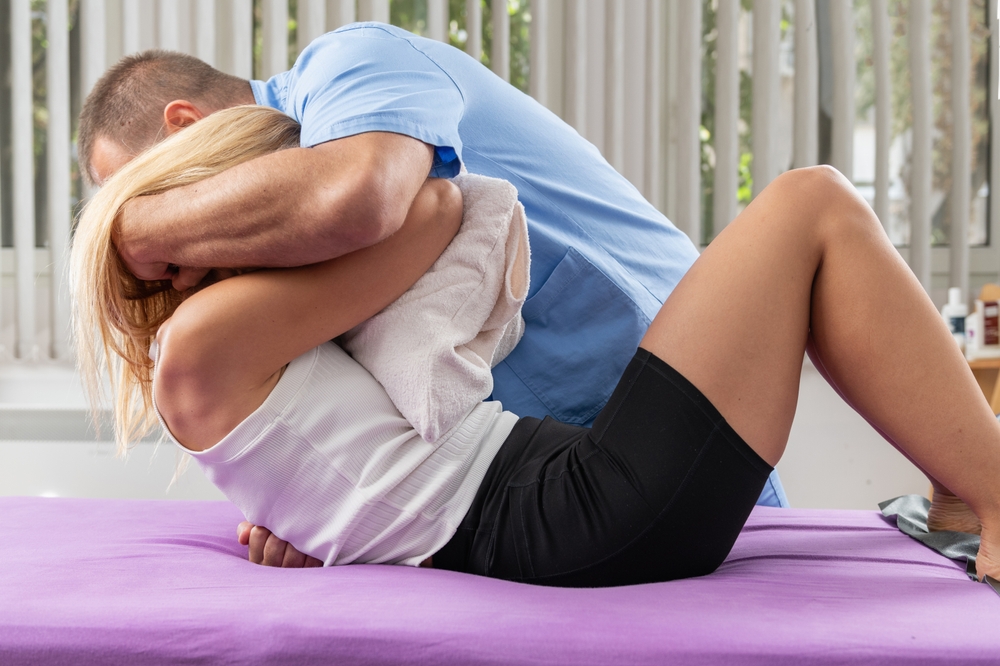
How Do Chiropractic Adjustments Work?
Chiropractic care focuses on the health and alignment of the spine, recognizing its vital role in overall well-being. A central component of… Read More
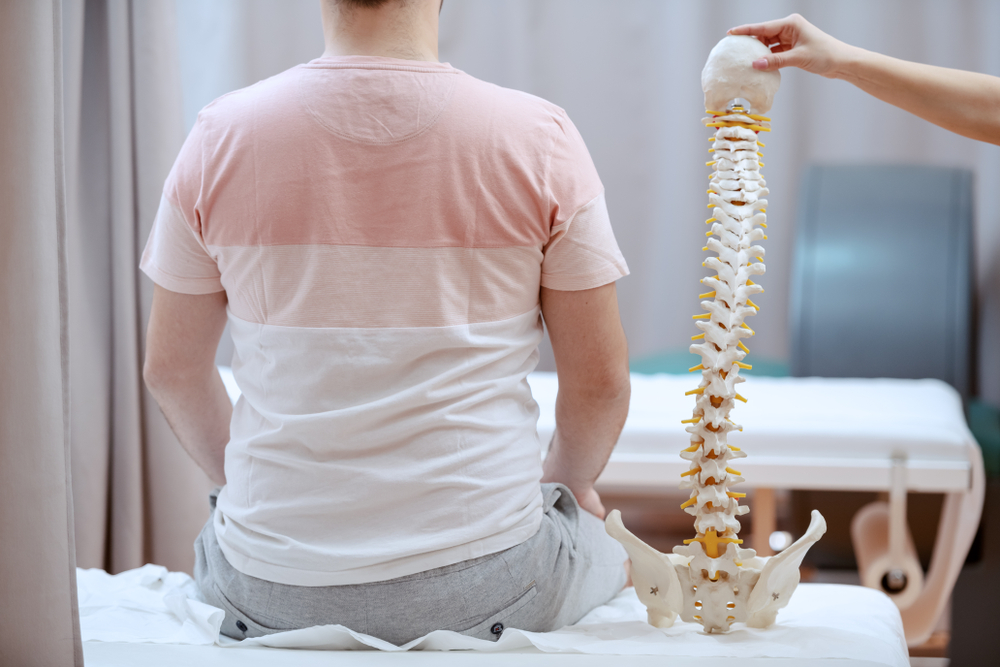
6 Types of Chiropractic Adjustments and How They Work
Chiropractic care is a popular form of healthcare focused on spinal health and overall well-being. Chiropractors use a variety of techniques to… Read More
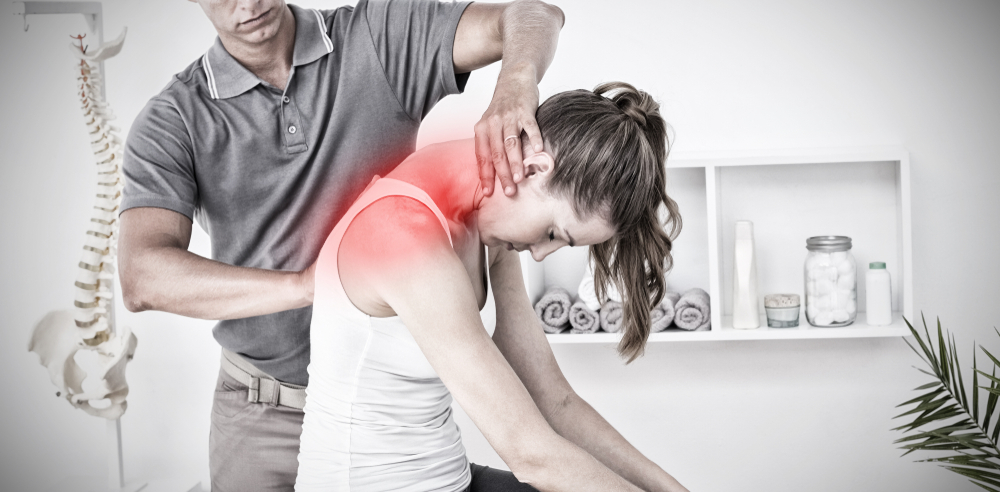
7 Researched Benefits of Chiropractic Adjustments
Chiropractic care focuses on maintaining spinal health and addressing misalignments that can cause a variety of health issues. The practice is growing… Read More

How Chiropractic Care Can Help Ease Back Pain
Most people have felt the agony and discomfort of back pain. And while chiropractors treat more than just back pain, most people… Read More
